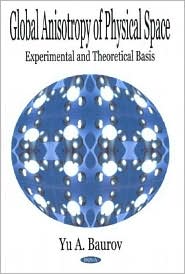Global Anisotropy of Physical Space: Experimental and Theoretical Basis (Buy Now)
In the monograph, the results of experimental investigations of the global anisotropy of physical space hypothetically caused by the existence of cosmological vectorial potential, a new fundamental vectorial constant associated with a new anisotropic interaction of objects in nature, are presented. The above interaction is distinct from the four existing ones: the strong, weak, electromagnetic, and gravitational interactions. It is shown that the same anisotropic property of the physical space manifests itself with a high degree of reliability (-0.95) in experimental investigations performed with the aid of torsion and piezoresonance quartz balances posed in high-current magnets, in investigations of changes of (-decay rate of radioactive elements as well as in experiments with plasma devices, a system of quartz resonators, and two high-accuracy quartz gravimeter \'Sodin\' one of which is with a specially attached magnet.It is also shown that the experimentally detected anisotropic property of physical space reveals itself in the anisotropic distribution of earthquakes above 6 Richter numbers of power (for the spatially immobile Globe), in the distribution of solar flares on the surface of the immobile Sun, in the distribution of pulsars in the Galaxy and possibly in the suggested rotation of the Metagalaxy.



